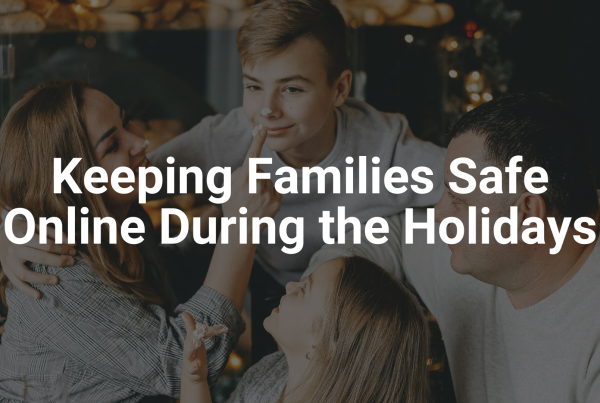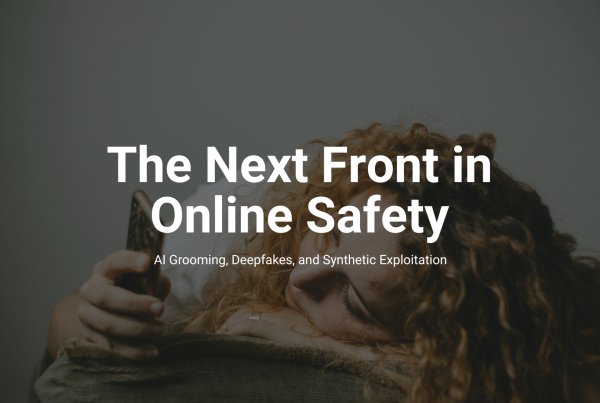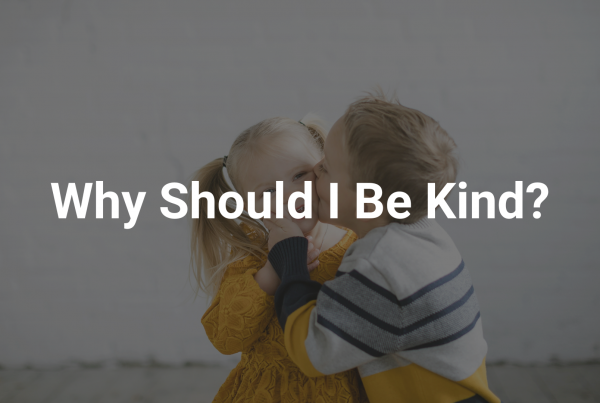WARNING
The following describes accounts of child sexual and physical abuse, which the Innocent Lives Foundation works to prevent. This blog contains content that some individuals may find disturbing or distressing in nature. Please be emotionally prepared before proceeding.
Names, locations, and other identifying information have been changed for the safety of the victims and the Innocent Lives Foundation team. Any similarity to actual names, living or dead, is purely coincidental.
Authors: Dr. Abbie Maroño
Published: September 17, 2024
Several years ago, I remember sitting on my kitchen floor, clutching at my chest, begging the universe to take the pain away. It felt unbearable and endless. When the universe didn’t take away my pain, I decided that I was going to make it go away myself.
This is a normal response to pain; we do not want to feel it, and of course, it is human to want to make it go away. But there are three paths we can take here: escape, suppression, or healing.
In full disclosure, I chose the path of suppression at that time in my life. It was not until many years later that I finally changed tracks and walked the path of healing.
Escape
One common reaction to intense emotional pain is to try and escape from it. Escape involves turning to substances like alcohol or drugs, overeating, excessive screen time (including social media and binge-watching TV), gambling, or engaging in other maladaptive behaviors to avoid pain. In modern society, these behaviors’ availability and social acceptance make it easy to resort to them. For example, alcohol is readily accessible and often socially encouraged as a coping mechanism, while digital distractions are available everywhere with minimal effort.
While escaping our pain might provide temporary relief, it often leads to worsening mental health and well-being. Escapist behaviors can exacerbate feelings of depression and anxiety, leading to a deteriorating spiral of mental health. Indeed, individuals who engage in such behaviors often experience a temporary sense of relief, followed by intensified feelings of guilt, shame, and isolation, which can perpetuate a harmful cycle. Moreover, the object of escape, whether it may be the use of substances, increased sexual behavior, or any other form, can become a source of addiction or dependency. This dependency further entraps individuals in their maladaptive coping mechanisms, making it increasingly difficult to break free and address the underlying pain.
Suppression
Another common reaction is to suppress the pain. Suppression involves denying or pushing away distressing emotions, pretending they do not exist, or refusing to acknowledge their impact. In the short term, emotional suppression is linked to increased physiological stress responses and poorer mental health outcomes. Suppression can also lead to reduced social functioning and greater internalized distress, as it often prevents individuals from processing and resolving their emotions.
Over time, suppressed emotions can manifest as physical symptoms, such as chronic pain or illness, further complicating the individual’s overall well-being. Moreover, if suppression is used as a long-term coping mechanism, it can lead to emotional shutdown. Emotional shutdown is when an individual becomes numb to their feelings, essentially disconnecting from their emotions as a defense mechanism.
This disconnection can result in a lack of emotional responsiveness, difficulty forming and maintaining relationships, and a general sense of apathy or detachment from life.
The consequences of the emotional shutdown are significant. It can hinder personal growth, reduce empathy and understanding in relationships, and contribute to isolation and loneliness. This state can also prevent individuals from experiencing the full range of human emotions, leading to a diminished quality of life.
Healing
The most challenging yet rewarding path is healing. Healing requires facing the pain head-on, understanding its origins, and working through the emotions to reach a resolution and peace. We must lean into the pain. We have to know where and why it hurts; we cannot get to the root of it unless we allow ourselves to feel it. Healing requires courage and patience as we work through our emotions and confront the sources of our pain.
Studies consistently show that facing pain directly and processing it can lead to significant psychological and physical benefits. Confronting painful emotions reduces the likelihood of long-term psychological distress and improves overall mental health. Individuals who engage in this process experience greater emotional resilience, better stress management, and enhanced well-being. Furthermore, allowing oneself to experience and understand painful emotions fully can lead to profound personal growth and a deeper understanding of oneself.
I love a quote that seems fitting here: “We must consider the role we play in our suffering.” Even when the hurt was unjustly inflicted upon us by someone else, lessons can be learned. For me, my heart felt shattered by the abrupt and painful end of a relationship with someone I believed to be “the one.” In my healing, I began to reflect on and understand why I overlooked red flags at the start of the relationship. I realized why I allowed people to treat me less than I deserved. Instead of fighting those harsh realities, I leaned into them and began addressing them.
It is undeniably difficult to feel our feelings sometimes, but we must. By confronting our pain and understanding its origins, we can begin the process of true healing. This path is challenging but leads to a deeper sense of peace and self-awareness. Ultimately, it empowers us to break free from the cycles of escape and suppression, allowing us to live more fulfilling and authentic lives.





